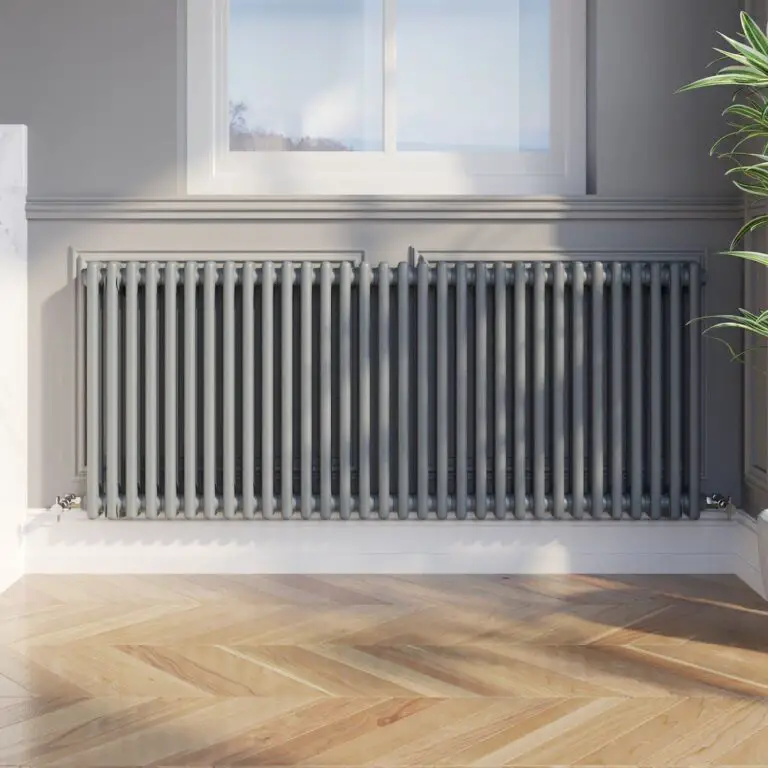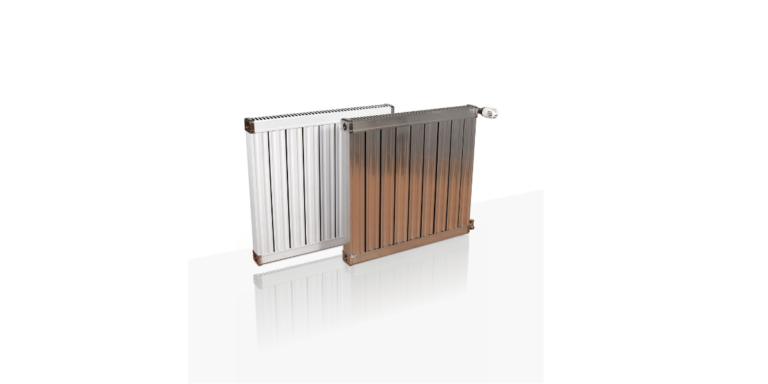Have you ever heard of British Thermal Units (BTUs)? You may have heard your plumber or HVAC technician refer to them when discussing your home’s heating system. But what exactly are BTUs and why are they so important when it comes to radiators? In this article, we will explain what BTUs are and why they are so critical for the efficient operation of radiators.
What Is A British Thermal Unit (BTU)?
A British Thermal Unit, commonly known as a BTU, is a measurement of energy. It represents the amount of energy required to raise one pound of water by one degree Fahrenheit. This is important for understanding the power and capacity of radiators, which need to generate a certain amount of energy to heat up a given space.

BTUs are used as a reference point when measuring the performance of radiators and other heating systems. By understanding how many BTUs are needed to heat an area, home owners and engineers can determine the best radiator size and type for their needs. This helps ensure that radiators can efficiently heat up the desired space without wasting energy or overworking the system.
Understanding BTUs is essential for making sure that radiators and other heating systems operate efficiently and effectively. It provides an easy-to-understand way to accurately compare different fuels and determine which ones will produce the most energy with minimal waste. With this information in hand, it’s easier than ever before to make informed decisions about heating systems—and ultimately save money in the long run!
How Does The BTU Measurement Work?
Brief History
First, it’s important to understand the history behind BTUs. They were originally developed in the early 1800s by engineers in England who wanted to measure the power output of steam engines more accurately. The creators determined that one BTU was equal to the amount of energy required to heat one pound of water from 58°F to 59°F. Since then, BTUs have been widely used as a measure of energy output for many different systems, including heating and cooling systems.
How They’re Measured
Now let’s look at how BTUs are measured. Generally speaking, BTUs are calculated by multiplying the volume (in cubic feet) of a space by its temperature differential (the difference between its current temperature and its desired temperature). This calculation will give you an approximation of how much energy is needed to heat or cool that space.
Because they measure energy output so accurately, BTUs are essential for understanding how radiators work. By calculating the total number of BTUs needed for a given space, engineers can ensure that radiators are powerful enough to heat or cool a given area effectively and efficiently. Without knowing this information beforehand, it would be difficult – if not impossible – to achieve desirable temperatures in any given space with accuracy.
What Is The Importance Of BTU’s For Radiators?
Radiators need a certain amount of BTUs in order to be effective, and this can depend on many factors including the size of the room and the type of radiator being used. For example, larger rooms require more BTUs than smaller rooms because they will require more energy to heat up. Similarly, traditional radiators require more BTUs than modern ones due to their design.
It’s important that you know exactly how many BTUs your radiator needs in order to be effective at providing heat and keeping your home comfortable. This means that you have to do some calculations based on the size and type of radiator you are using, as well as other factors like humidity levels and insulation levels in your home. Once you have this information, you can choose a radiator with enough BTUs for your specific needs.
By taking into account all these factors, you can ensure that your radiator has enough BTUs for its purpose: helping keep your home warm and comfortable during cold weather months. With this knowledge, you can make sure that your radiator is operating efficiently so that it can provide optimal heating performance throughout the year.
How Do BTU’s Affect The Efficiency Of Radiators?
One BTU is equivalent to 1055 joules of energy and is used to rate the capacity of radiators to produce heat. The higher the BTU rating, the more efficient and powerful the radiator will be. Likewise, a lower BTU rating suggests that a radiator produces less heat and is not as effective. It’s important to consider this when shopping for a new radiator or replacing an old one.
In addition to determining how well a radiator functions, if you’re looking for more BTUs then this is likely to have an impact on the size of a radiator. Generally speaking, the higher the BTU rating of a radiator, the larger it will need to be in order to effectively radiate that heat into its surroundings. That means that if you’re looking for an efficient and powerful radiator, you may need one with a larger size than you originally anticipated in order to accommodate its high BTU rating.
For these reasons, it’s essential when shopping for radiators that you carefully consider its BTU rating in order to ensure that it meets your heating needs. If you select a model with too low of a BTU rating for your space, you may find yourself disappointed with its performance; conversely, if you choose one with too high of a BTU rating then you may end up spending more money than necessary.
How To Calculate The Proper BTU Output For Radiators?
When it comes to radiators, a key factor in their efficiency is the amount of British Thermal Units (BTUs) they produce. This means that it is important for homeowners and other users to understand how to calculate the proper BTU output required for the rooms in their home. There are several steps involved in this process but you can use our BTU calculator to work out how many BTUs your room needs (and therefore how many radiators you need, including the size they should be).
First, it is important to determine the size of the room or area in which the radiator will be installed. The BTU output must be sufficient enough to heat this space properly. This calculation can be done by measuring the length and width of the room and then multiplying these numbers together to get a square footage figure.
Once the square footage has been determined, the next step is to find out what type of insulation is present in the walls and floors of the area. This will help determine how many BTUs per hour will be needed in order to maintain an optimal temperature. For example, if there is good insulation with double-glazing windows, then fewer BTUs may be necessary than if there were no insulation at all.
Lastly, it is also important to consider any other factors that may affect heating needs, such as how much sun exposure a particular room gets or whether there are any appliances that contribute heat into a space. Taking all these elements into consideration should give one an accurate estimate of how many total BTUs are needed for efficient heating from a radiator. Knowing this number allows one to choose a suitable model with sufficient BTU output for their needs.
What Are The Benefits Of Installing High BTU Radiators?
One of the main benefits is that if you install a radiator with a higher BTU rating, then you won’t need to turn up the thermostat as much to reach your desired temperature. This means that you can save money on heating bills because you’re not using as much energy. In addition, it also helps to create an even temperature throughout your home, since a higher BTU output will cause the heat to spread further.
Another benefit of installing a high BTU rated radiator is that it will require less maintenance than one with a lower rating. Since these radiators have larger heat capacity and require less power to reach their desired temperature, they don’t need to be serviced as often or replaced as quickly due to wear and tear. So if you want something that requires less maintenance over time and helps keep your house warm during winter months, then investing in high BTU rated radiators is definitely worth considering.
Frequently Asked Questions
What Is The Difference Between BTU’s And Watts?
BTUs are a unit of measurement used to describe the amount of energy required to heat one pound of water by one degree Fahrenheit, while Watts measure the rate at which energy is being used. So, what’s the difference between the two?
To convert between the two, a multiplier of 3.41 is used. This multiplier takes into account the fact that one BTU is equal to about 0.293 Watts, so to convert from BTU to Watts, you would multiply by 3.41, and to convert from Watts to BTU, you would divide by 3.41.
BTUs measure thermal energy, or heat, while Watts measure electrical or mechanical power. This means that BTUs measure how much heat is needed to raise the temperature of something, while Watts measure how much power is being used in order to create that heat.
It’s easy to see why BTUs and Watts are both essential when it comes to determining how much energy is needed for heating purposes. Understanding their differences can help us make better decisions when choosing radiators and other heating sources. Knowing which type of measurement accurately represents the amount of energy needed can help us save time, money and effort when installing or replacing our home heating systems.
Is It Possible To Increase The Heat Output Of A Radiator?
It is not possible to increase the BTU output of a radiator; however, you can use a thermostatic radiator valve (TRV) to control how much hot water enters the radiator. The TRV works by regulating the flow of hot water into the radiator, allowing you to adjust the temperature of the room. It is typically installed at the base of the radiator, near the floor, and the user can adjust it by rotating a knob or turning a lever. By using a TRV, you can reduce the amount of energy used to heat the room and ensure that the radiator is operating at its optimum efficiency.
If you’re looking for a more permanent solution, then you could consider investing in a new high-BTU model. This will give your home an instant boost in heating efficiency and also reduce your energy bills in the long run. There are many different types of radiators available today that boast impressive BTU ratings; so make sure to do some research and find one that best suits your needs.
No matter which option you choose for increasing your radiator’s BTU output, it’s important to remember that regular maintenance and checks are still essential for ensuring optimal performance. It’s recommended that you check the condition of your radiators regularly and adjust their settings accordingly to keep them running at optimal levels all year round.
What Is The Maximum BTU Output For A Radiator?
So what is the maximum BTU output for a radiator? It depends on several factors such as size, material, and purpose. Generally speaking, the size of a radiator determines its maximum BTU output — larger radiators typically have higher outputs than smaller ones. Some models can provide up to 1500-2000 BTUs while others may only generate 500-1000 BTUs.
It’s also important to consider that different materials have different BTU outputs — metal radiators typically have higher outputs than plastic ones. Similarly, if you need your radiator to heat up a large room or space quickly then you’ll likely want one with an even higher output than normal. You should also bear in mind that many heating systems need radiators with specific ratings in order for them to operate correctly, so it’s essential to check with your supplier or manufacturer before making any decisions.
Ultimately, when selecting a new radiator for your home or business it is important to consider all of these factors in order to ensure you choose one that meets your requirements and offers an adequate level of performance. Taking into account the size of the room along with the type of material you require can help make sure you get the right heater for your needs and avoid any unnecessary costs in terms of efficiency and power output down the line.
Conclusion
In conclusion, understanding BTUs and their importance for radiators is essential to ensure that heaters are efficient and safe. By checking the BTU rating of a radiator, you can make sure that they have enough power to properly heat up the room.
Lastly, if you choose a radiator with higher BTUs, you can expect a longer lifespan from it compared to one with lower BTUs. All in all, knowing about BTUs and how they affect radiators can help us make better decisions when choosing new radiators for our homes or businesses.






